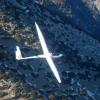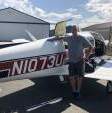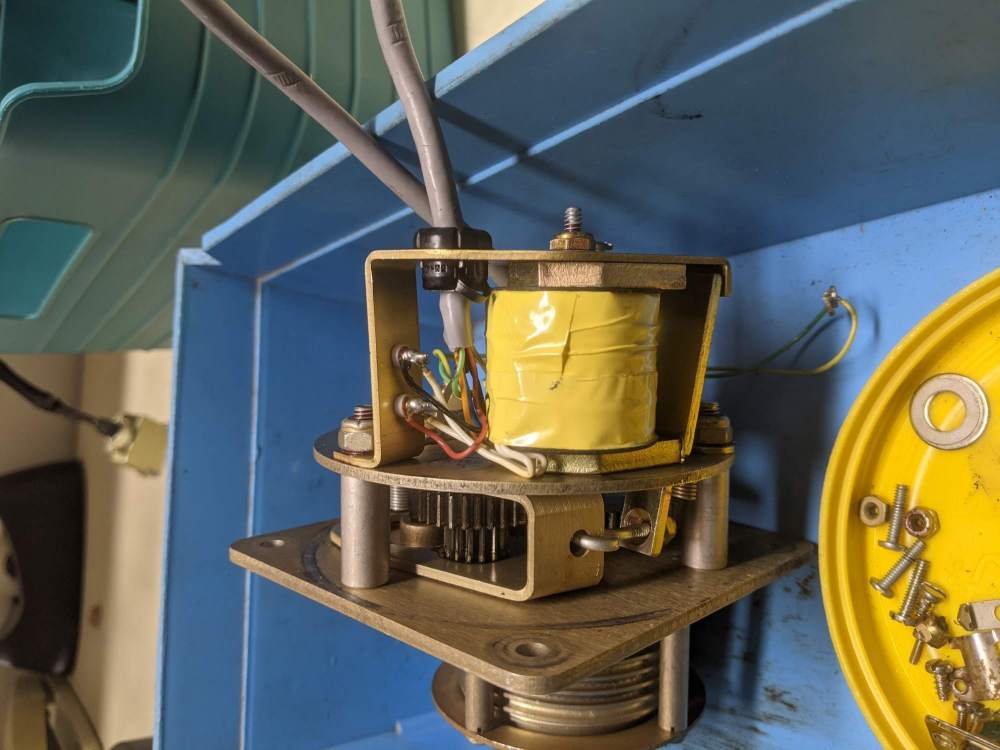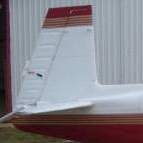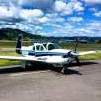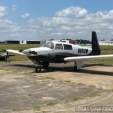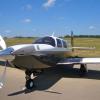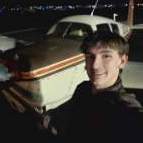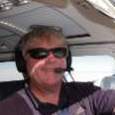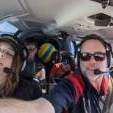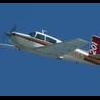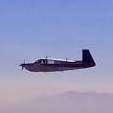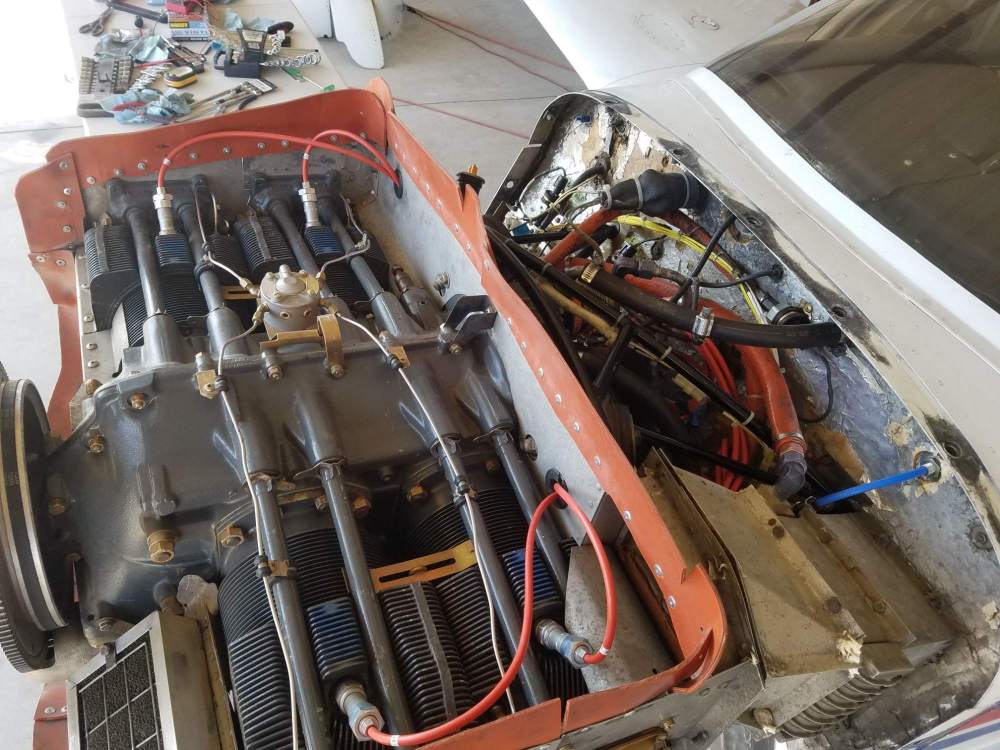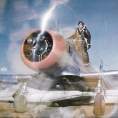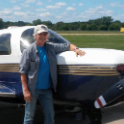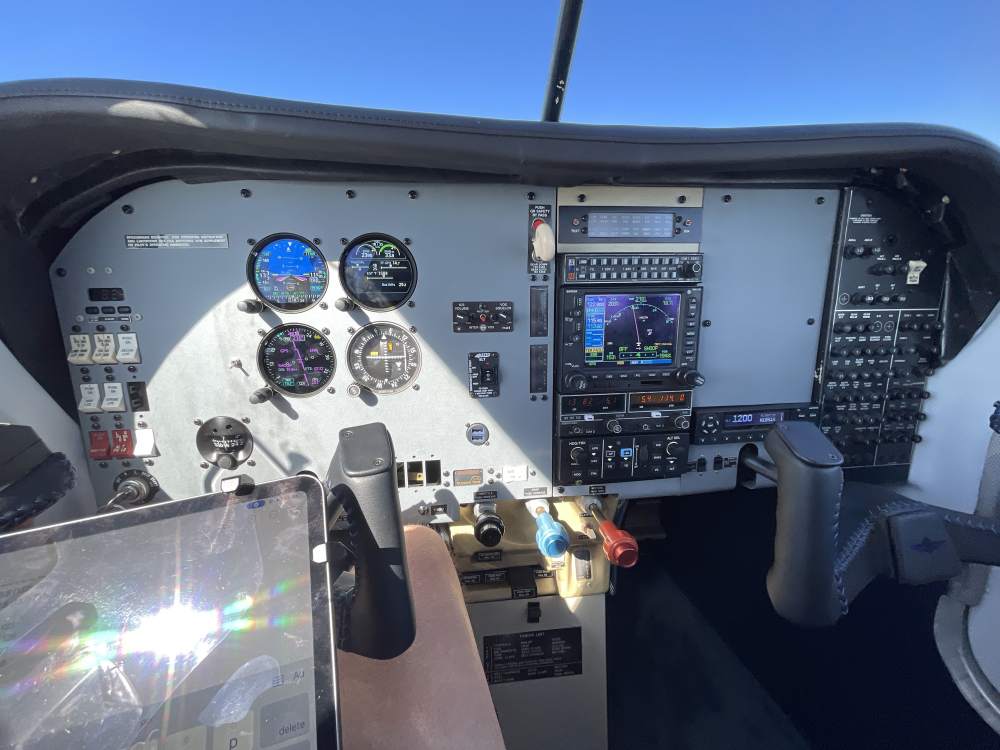Leaderboard
Popular Content
Showing content with the highest reputation on 07/09/2021 in all areas
-
It's been a while. Back in the 70's as an Oakland cop, I'd drive down Earhart Rd. (that runs by the "old airport"), shining my spotlight on the ramp, looking at the parked planes. Mooneys just looked fast sitting there. I knew little about them, but did know I could never afford one. That changed 20 years later, some ten years after I founded Morgan Alarm Co., when in 1991 when I had my company loan me half the purchase price for 58065, an '87 201. At the time, this seemed the culmination of a lifelong fascination with flying, an unimaginable dream come true. As Mooney owners, we are so fortunate. At one point I owned 3 power planes and 2 self-launch gliders, but now age and (fortunately just minor) health issues have prompted the sale of all but my Husky A1-B bush plane. Many here probably won't remember me, as I was far more active on the forum back 20 to 30 years ago . . . still, I thought it appropriate to say goodbye and thank you to all for everything you've taught me and all the help that was given, hopefully I returned the favor some back in the day. Clear skies, unless you fly gliders too - than add some puffy cumulus to circle under. All the best, bumper13 points
-
My real concern would be for high DA takeoffs with quick gear and flap retraction. If you're always quick on the draw for gear and flap retraction (as I've seen many times) there's the likelihood you'll do the same at a time when it is inappropriate, therefore my 50' or no more runway for gear retraction and 300' for flap retraction.5 points
-
My mentor instructor, who was an aeronautical engineer, said that approach flaps (takeoff flaps) provide ⅔ as much lift as drag while full flaps provide ⅔ as much drag as lift. So, gear up at 50' or no more runway to land on and flaps up no less that 300' (to account for sink when flaps are raised) or after I'm done with a takeoff turn (for added safety margin). That's the way I teach it.5 points
-
My wife and I are visiting the grandchildren in Rexburg Idaho this week. My son in law told me there is a airplane museum at the municipal airport. It is called the Legacy Flight Museum. Pretty neat little place to stop and look around. Inside they have one of 3 airworthy P63 King Cobras, the P51 Mormon Mustang, a Beech 18, a S-2 Tracker, a Stearman, a T-6, a 0-1 Bird Dog and a DHC-4 Caribou that all fly and are airworthy plus a static A4 in Blue Angels livery and a Mash helicopter. Plus a lot of interesting military memorabilia. Just as we were about to leave another guy came over and mentioned they had Ole Yeller and ask if I wanted to see it, it was in the next hangar opened up for an annual. well the answer was yes. His Shrike Commander may be in the Smithsonian but Bob Hoover’s Mustang is in Idaho.4 points
-
Last year doing a flight review, young instructor said pick a place on the runway for a spot landing. I picked the thousand foot marker and with just a little slip, nailed it. Then a soft field. A little slip, bit of power at the last second and greased it on the same spot. Then he wanted a power off. From my normal tight pattern, I turned base just past the end of the runway. Gear, then flaps, still high so I used all the rudder and slipped it to the ground. Same spot. The instructor said he never saw anyone on their own use full rudder to slip. Great tool to make the airplane do what you want, where you want. I was light, 75mph indicated, nose must be down! If you try to level with full crossed controls, the airspeed will bleed off in the blink of an eye and bad things will happen.3 points
-
update! third time is charm, just not a third time with the Lycoming EIS. surefly on, PC17v surefly power conditioner on, ferry permit obtained, 400mi flight around the weather to get it to the Mooney service station in troutdale,OR and success.... she ran like a fine swiss watch.3 points
-
Just a final post on the roll servo issue. The avionics shop just rang and the plane is good to go. Turns out 2 screws holding the motor on the servo backed out and one jammed the solenoid! The servo has been untouched since installation back around 1993 I put the "!" because my other recent thread was about 3 screws backing out of the cap on recently installed Surefly Magneto. Unrelated, of course, but.... Peter3 points
-
My Dad and I used to joke about putting our airplane on a Progressive Maintenance Program. “Isn’t that the program where you are always working on the airplane?”, was our punchline. Now I have a different point of view. “Progressive Maintenance”, to me, is just another term for “Aircraft Ownership”.3 points
-
The FAA has a website with all the ADs. You have to read the individual ADs to know if they have recurring requirements. Your IA should maintain an AD list in your maintenance records. There should be notes showing the the next engine or airframe compliance time. If you cannot find this info and cannot figure it out, your IA is required to know how to do this. Ask them for help. It would be good for you as an airplane owner to become familiar with all ADs that apply to your plane. It is not your IAs responsibility to insure compliance with them it is yours. The IA can inspect the aircraft at annual and find that it has an AD that is not in compliance. As long as he lists that, he has met his responsibilities. If you then flew that plane it would be your violation, not his. In practice, most owners depend on their IA to ensure AD compliance, but the rules are clear that it is the operators responsibility.2 points
-
You have to comply with recurring ADs. Your plane is subject to 73-21-01 which requires lubrication and a gear swing. There is also recurring inspection and lubrication if you have electric gear. It is your responsibility as an aircraft owner and operator to insure compliance with these. https://rgl.faa.gov/Regulatory_and_Guidance_Library/rgAD.nsf/AOCADSearch/022EF974FDE32DBA86256A3B006FA1EA?OpenDocument2 points
-
231 here. Gear up as soon as I have a positive rate on the VSI, regardless of runway left. Flaps up when the gear is in the wells. Then pitch for midway between Vx and Vy to gain maximum altitude with minimum risk, as close to the airport as possible. Vx risks an inability to get the nose over in time if the engine quits. It is for performance takeoffs but not everyday takeoffs. Vy gains altitude too far from the airport to make it back if the engine quits. My initial climb in my aircraft is 85 KIAS. Getting the gear and flaps stowed helps to accelerate to that speed faster and allows a steeper climb at that speed. I use takeoff flaps for takeoff in my aircraft, that's half flaps.2 points
-
I suspect that the controller was saying that he wouldn't allow YOU to fly into Bravo, likely to reduce workload. Not aware of any rules changes.2 points
-
Peter there is only a solenoid and wires inside that servo, you may consider taking a quick peek inside it, but first try pulling the the back shell apart and inspect the servo connector first (servo side). If you don't see anything loose, check across pins 1&2 for the impedance of the solenoid, if you find an "open", then get the peek inside. There is a set of solder terminals in there used to connect the solenoid to the servo harness, try to measure for the impedance there as well, if still open the solenoid coil is bad. It is very rare to see one of those coils fail. Give me a call 616 822 1999, I can help you thru this.2 points
-
Nah, too slow! This is what you need (fastest ship in the galaxy per Han Solo!):1 point
-
That is incorrect. Garmin owns a J. It was used to certify the Js. My M20F was used to certify the Fs and Gs Another MS aircraft was used for the Es and an additional E was used for the 62-64 year models. Garmin uses loaned aircraft to certify their APs. They have multiple hangars full of aircraft undergoing certification.1 point
-
In the DC area you can easily transit or takeoff / land in the SFRA on an IFR flight plan, but will routinely be told to remain outside of Bravo. Considering the SFRA clearance hassle (particularly Entry / Exit Gates) you are avoiding, it is no big deal to remain outside of Bravo airspace when transiting or taking off / landing in the SFRA on an IFR flight plan. Potomac Approach is an excellent TRACON.1 point
-
That used to be my avatar. I fixed the alternator on it once at the museum in St George UT. They really cleaned it up, it was a lot greasier when I worked on it. I took all those cowl skins off, it is really cool taking apart a mustang!1 point
-
If my engine takes a dump over hostile terrain I assume Odin has decided I belong in Valhalla. I get it down with a whole skin I'll chalk that up to my mad piloting skilz.1 point
-
Honestly not much to see. Just treat it like normal ROP or LOP ops. Above about (very roughly) 5000’, timing advances slowly with altitude. You might start to notice very slightly warmer chts. In cruise, there’s not much difference in ROP with the timing advance, however, LOP works better to extract a little more power with the advance. Chts are plenty cool either way, but I’m maybe about 3kts faster LOP now than before the SF. Basically no change if running ROP.1 point
-
Recall, that lift is constant in unaccelerated flight whether climbing, descending or level. So, if you abruptly change lift you will create an acceleration. Humans are sensitive to that. The sinking feeling comes from sensing the downward acceleration. It's only a small change in lift and a thus a small acceleration, but it can feel more significant when close to the ground. Also recall that lift is proportional to the square of airspeed, so the loss of lift from the flap retraction can be countered by increasing airspeed which is what happens if the flaps raise slowly while the aircraft is allowed to accelerate. The primary reason not to raise the flaps until clear of the obstacles is because you may already be at a low airspeed (Vx) so you don't want to increase pitch to increase angle of attack (and lift) and slow further, and you don't want to lower the nose to increase airspeed (to increase lift) because that will lower climb angle. So you are between a rock and a hard place. The M20J has electric flaps and with King autopilots, the manual electric trim speed is well matched to the flap motor speed. I find that during takeoff, if I maintain about a 7.5 deg pitch attitude and raise the flaps at 80 KIAS while holding nose down trim that the airplane accelerates nicely, stays in trim and doesn't sink. With hydraulic flaps you have to learn to match pitch forces and/or manual trim wheel movement to accomplish the same result. Skip1 point
-
You are touching on "marginal value" pricing vs. "marginal cost" pricing. Yes, the critical parts keep the plane flying as you highlight, ....so if your plane is worth $100,000 airworthy and only worth $30,000 scrap value then we should be prepared to pay something approaching $70,000 for any major part that is critical to keep it airworthy...right? That makes this $1,900 single part for only one seat look like a bargain. However, Mooney made thousands of planes with the same basic seat design so you would think that they have the drawings, dies and the welding jigs. And one would think that the marginal cost for material, set up and labor should result in a reasonable price around $500 even with 100% mark-up or so for lawyers. If on the other hand Mooney tossed all the jigs and dies and manufacturing drawings for the legacy fleet, as some have claimed in past posts, then "reinventing the wheel" on these parts is expensive and takes time (if Mooney wants to supply at all). It is no wonder that many MSer's, in order to keep their plane affordable, are motivated to think long and hard about parts as pieces metal that "someone" can build "in their garage" or else scavenge from dead Mooney's. Another active MSer summed it up well last year - "if original parts are available, my AI has insisted that they be used...when original parts are not available, my AI has allowed me to make or modify my own parts (as it makes sense). Factory parts cost about 4 to 5 times what they are worth."1 point
-
1 point
-
I have never paid much attention to airspeed when slipping because it won’t be correct anyway. Before my first Mooney I had slipped my Cessna 140 a gazillion times and on my private checkride in it, the DPE yelled “keep that nose down” at the top of his lungs when I was demonstrating a slip. Any time I slip now I hear his words, so I always keep the nose down. When Bob Cabe brought my C to me and did my familiarization training, I had flown a good bit with him when I came in high and asked him if I could slip a Mooney. He said “sure, you can slip this one all you want. I was on final, so I was probably doing 80 or less, so I just laid it over, kept the nose down and slipped it like it was my little taildragger. I think that slipping is something you do much more by feel than by instruments. If you’re properly established on base or final, you will be at a good slip speed. I usually am slipping on final. Often I start the slip when I’m turning final and just hold in some bank as I straighten up for final. Actually after having gotten more Mooney time, I don’t remember coming in high and needing to slip recently.1 point
-
Which begs the question, what were the raw take off EGT numbers for the C?1 point
-
I have had a mixed experience with getting cleared through Bravo. I assume it depends on the situation and the controller and I also think the pilot. I routinely fly from Alabama to Monroe NC and have to navigate both ATL and CLT Bravo. If I file direct, the plan is always amended around ATL. So I file to HEFLIN on the West Side of ATL, then up to NELLO on the north. Often, I can ask and am allowed closer to Bravo. Direct is 10-15 minutes faster than flying the waypoints on a 1.5 hour flight. On descent into CLT they usually start me down about Greer with a warning to stay clear of the bravo. I have a USER waypoint on my iPad called xBravo that reminds me when to start down because sometimes they forget and I have to descend at an alarming rate to comply. Coming home, CLT typically clears me through their Bravo once clear of arrivals/departures and I typically fly below ATL bravo but ATL will clear me through the NW section of their Bravo most days if I ask and flying direct home. Good experiences in DC, NYC and Cleveland. DFW puts me on an arrival or departure procedure every time into Mckinny even though it is barely inside of the edge of Bravo. So I usually cancel and fly VFR if able. If I file direct out of CLT on bad weather days, they usually give me a complicated route. So I typically file NELLO. Sometimes they still give me a stupid route right over CLT and then over the mountains to Chattanooga then home. I have declined that routing several times for weather and they will work with me. Many times I have asked for clearance through Bravo for good reason (IFR or VFR). Weather - almost always will clear me if they can and my request is reasonable. Once over CLT on an IFR flight plan to DC area there was a line of thunderstorms as far as I could see and the only clear spot was inside of CLT Bravo. I was already deviating and asked them to clear me through that spot. The radio was alive with the airlines all doing the same thing. CLT told me they were unable which would have forced me to divert about halfway through my route. I asked politely if they could clear me as they were clearing other aircraft through there. The controller declined again and I asked to divert to Hickory. A supervisor came on and told me she could clear me through and had several airliners extend their hold while I went through. Once through, I heard her say - Cactus 123 traffic 12:00 a Mooney - then the radio exploded again with traffic. VIP treatment? As GA, we have a right to the same airspace as the big guys. Some controllers seem to think otherwise. But some pilots forget that controllers can have a challenging job and an airliner full of people and low on fuel need not be delayed for a single looking to shave a few minutes off their flight plan. Many of the controllers in CLT recognize my tail sign and say welcome back 51K. ATL is rarely friendly but always professional and always defensive of their airspace. Overall, I am thankful for the support they give but do think they can be too greedy with their space.1 point
-
1 point
-
You are alway helpful on this forum. Thank you so much! This isn't a firm decision yet. I am just looking at options. Since it appears that Monroy doesn't make the extended tanks. That is our main priority. We are looking at cheaper bravos and spending money to outfit it to our spec. Or just might go for an Acclaim. Like I said, i am just looking at options. Thanks again!1 point
-
1 point
-
The maintenance manual has the procedure for setting the flap retract rate… Including the timing to expect while on the ground… In flight conditions, everything speeds up… So don’t be surprised with how slow they go without any air pressure on them… PP thoughts only, not a mechanic… Best regards, -a-1 point
-
Mooney changed the interior in the Bravo to the new fiberglass side panels toward the end of the 1994 model year (same year the Ovation was introduced). Serial number 181 was the 1st, then 184 and from that point on until the end of the Bravo run. I have serial number 150 but had Hector at AeroComfort cover the royalite panels in ultraleather and its almost as nice as the later fiberglass interiors. One thing I like better on the newer Bravo interiors with the fiberglass side panels was that they put all of the lighting switches overhead and freed up instrument panel space.1 point
-
Got 'em on our plane. Yes it seems like a lot of money. Aerotough material is not delrin or anything else off the shelf. A little research into the history and capability of Marsh Brothers Aviation will provide insight into this material. And the caps operate smoothly and easily like never before and like nothing else. These plus the MS25988/1 flourosilicone o-rings are a great improvement.1 point
-
Sold our 1963 M20C for $57k. 1100 SMOH. 50 SPOH. Leather interior in good shape, good paint. Garmin 430W, STEC30+A, Lynx transponder, new 403MHz ELT. Recently sealed tanks. Recent gear pucks, new nose truss, starter, mags, SOS.1 point
-
We should post parking information and maybe do some sort of plane to plane beer potluck1 point
-
1 point
-
Lycoming max allowable oil consumption formula 0.006 x BHP x 4 ÷ 7.4 = Qt./Hr. If I do the math right a 200 HP motor is allowed to use .65 quarts an hour or 6.5 quarts every 10 hours. ‘So 1 quart every 6 to 8 is well within limits Lycoming color codes, the old chrome barrels had the whole circumference of the jug right at the base colored orange. https://www.lycoming.com/content/understanding-engine-color-codes1 point
-
G5 also does that as he has an STEC rate based. Either g5 or gi275 works.1 point
-
An IFR rating and a turbo increases the dispatch reliability a lot. After owning a 231 and converting it to a Rocket I bought a 1990 J/MSE. Could not enjoy the plane. Every flight was a reminder of what it couldn’t do. Winter mountain flying goes from 20% dispatch to 80% when you have a turbo and the IFR. Flexibility to wait out weather is always mandatory but without the additional capability it becomes constant. The trip that convinced me to sell the J to a flat lander was from Saint George Utah back to Denver. As I watched many planes leave I chose to drive to Denver. Had to make the 1300 mile round trip the next Thursday to recover the plane and return my fathers car. I could not expect to stay clear of clouds in the J on that trip. A J in clouds in the fall over the mountains was beyond my comfort level. The Rocket on the other hand could have gotten above or around the clouds and stayed VFR that day.1 point
-
Yep. That just came out yesterday after I posted what I did the day before. I found out about it, funny enough, while I was at my avionics shop, yesterday, talking to my installer. The message came across his phone while we were talking.1 point
-
I would have to see your data to be sure. But this normal since with the higher temps, oil temp goes up and oil temp directly affects your Max WOT MAP. FF in turn just follows your MAP. Your controller is set to achieve redline MAP right at normal oil temp of 175F, and do to the nature of hydraulic controllers working with oil pressure, you'll see overboost when the oil temp hasn't yet warmed up too full operating temp and underboost when the oil temp is over normal operating temp. Since FF is just following your MAP, if there is some underboost in the MAP (lower MAP) FF will also be lower. This is normal but you may not have your controller set exactly to give redline right at an oil temp of 175F either. Also, just like Winter vs Summer differences, you should notice that on the first take off of the day, before oil temp is fully warmed up that MAP and FF are highest at takeoff and then a subsequent takeoff this time of year, with oil temp > greater than 175F will show a bit lower MAP and thus lower FF. Its entirely normal.1 point
-
I bought two sets of baffling from Airforms in the last year. One for the Mooney and one for the 56 Cessna 172. In both cases I was going to rehabilitate the old baffling. I found that after drilling out a bunch of rivets and looking at what was left, patches held together with patches. I decided life was too short and just got new ones.1 point
-
Get it cleaned up as quickly as you can, your climb performance will be better. I wrote this on 9-27-2020. It is a compromise. The best second segment climb comes with reduced to zero flaps. The shortest take-off run comes from increased flaps. Example 1. If you have the runway but you need the climb performance, use no flaps and come off the runway with extra speed and energy to quickly achieve Vx. Very commonly we would come off Guatemala City with Flaps 1 "Improved" which means we would accelerate to a higher than normal Vr speed to leave the runway with extra "smash" and reduced drag due to the low flap setting. The climb performance was spectacular but you needed intestinal fortitude to hold the airplane on the deck as the end of the runway came towards you fast. Example 2. Taking off of PHOG nonstop to KATL in a fully loaded 767. OGG was only 7000', same length as LGA. Solution? Roll with the highest flap setting possible other than landing flaps, Flaps 20. Even with a 5 knot tailwind Rwy 2 works better than 20, because 20 has rising terrain, but 2 shoots you out across the beach. over the ocean, no obstacles, so climb performance is not critical, runway performance is the need. Sure she climbs slow, but you got her off the deck quick With light airplanes it is similar but not quite so stark and in a Mooney, you may not have a lot of choices in flap settings, but suffice to say if you need climb performance, the cleaner you leave the ground, the better off you are if you got the runway. If you need to leave the ground quickly, higher flap settings, but be prepared for a slug in the climb due to as donkaye points out, high drag. Consider your climb performance in a aborted landing and that is what you would have at best with a full flap take off. If climb performance is not important, but the runway is really short it would help, but since you have no numbers in the POH you are really in test pilot territory and any mishap would be hard to justify the use of full flaps while sitting at the "big green table" assuming you survive.1 point
-
There are a combination of things going on. Remember that the turbocharger is what produces MP above ambient, and it is not mechanically connected to anything in the engine, so it is not driven by the prop. The prop can be windmilling and the engine turning, but unless there is exhaust the turbo winds down. Another complicating factor is that the mags are pressurized and pressurization will fail without your pressurization source (the turbo) in operation. If pressurization fails the spark can arc across the mag cap to a cylinder the spark was not intended for. The resulting phenomenon, called “high altitude miss,” is very hard on the engine. Or the spark may simply be insufficient to cause combustion. See e.g. https://www.aviationpros.com/home/article/10388584/magnetos-under-pressure At 20k the standard ambient pressure is less than 14”. From experience I can tell you that the engine cools rapidly when you are at best glide and the engine is not firing. So now you are trying to start a cold to very cold, low compression engine, without enough spark. The POH for the 231 warns that you may need to descend below 12,000 for restart to happen. Even then, there are warnings throughout the POH against operating the engine at greater than 16” or 20”, depending on how low the oil temp has fallen. The POH warns that if the OT falls below 100, an attempt to run the engine at power may result in a sudden engine stoppage. What is going on, is that the oil is too cold to properly lubricate the turbo bearings, and the OT must be warmed before making power. Add in that you are crossing the Alps, or the Rockies, and you can’t descend to 12k and don’t have time anyway to warm the engine if it gets cold. It is not a wise move. These recommendations in the POH are conservative. And sure, if you jump on the fuel switch the instant the engine stumbles it should fire right away. I have done it. But I have done it over the mid-section of the US where I have all day to restart or find an airport if things don’t go perfectly. I would not do it, say, on a jump from Great Falls to Kalispell. Having done it, and having more than 6 hours of fuel on board, I no longer feel the need to give it a try. Much safer, is to test your fuel flow meter so you know its readings are accurate, fill the tanks correctly, know to a few tenths what is in each tank, and then not run one dry. Turbo ops are different from NA ops in many ways. For one thing, the NA is unlikely to fly at an altitude where unpressurized mags will not function properly. Turbo ops are very safe, in some ways safer than NA because you have an improved ability to get above weather. But you cannot just blythely apply NA ops to turbo ops or vice versa. PS I want to say that I admire curiosity and people who are willing to ask questions and seek information. I wish, when I first started flying my 231, that there had been more pilots savvy about turbo ops out there. I am not a CFI nor an engineer, just a pilot with some hours. I learned about “high altitude miss” the hard way, by having the “joy” of experiencing it firsthand, and I also learned the hard way not to “climb to target EGT,” which means leaning in a climb, an NA technique. Turbo ops are not complicated, when I fly, I have reduced my power settings to just some simple techniques. But to do that, one must understand the “why.” If anyone has more to teach about turbo ops I would love to hear it.1 point
-
Not that. When Foreflight updates a state before the effective date, there will be two versions - the current and the future. But once the new date comes to pass, the old is automatically deleted. But there can be leftovers. For example, if you don't have Mississippi as one of your selected states but check out a Mississippi airport or "Pack" for a trip there, it will download. Those don't update but they do hang around. I do a lot of "what if's" and follow YouTube flights, so I tend to have a lot of that stuff around. Best way to get rid of leftovers is the "Delete" button at the top of the Downloads page. It will give you the choice to delete everything or just expired data. Choose expired data. OTOH, if your memory problem is because you have selected too much, say, more states than you need, delete all and make better selections.1 point
-
There can be two timers configured in the G3X EIS: Engine Hours Total Hours I believe that your old electronic tachometer was set to drive the Hobbs at actual time when registering 2500 rpm. So the logical way to set up Engine Hours Is to begin recording when rpm > 300 (or any rpm lower than idle speed) and set the reference rpm at 2500. Total Hours can be any of the options @Warren pointed out depending on what you want to use it for. One idea is to set it to flight time and use it for maintenance records. FAR Part 1 defines Time in Service with respect to maintenance time records, means the time from the moment an aircraft leaves the surface of the earth until it touches it at the next point of landing. If you want to use it for logging pilot time, you might set it to record whenever the engine is running since that better approximates the FAR Part 1 definition of Flight Time Pilot Time that commences when an aircraft moves under its own power for the purpose of flight and ends when the aircraft comes to rest after landing. Skip1 point
-
Previous USAF F-15E and T-6 Tex II. Retired and Now flying corporate around the NW in a PA46T. CFI/II Too, but I prefer flying to teaching. Someone said it earlier, but CFI is more about the teaching with a good deal of patience. Oh yeah, and if @M016576 had flown the F-16, someone would have had to teach him how to say “bomb” and none of his F-15C buddies would ever talk to him again. See, his navy time was probably 2000 hours trying to score a 3 wire and 1 hour of how to use the weapons in a hornet, and nobody ever saw him in an F-35, so he can deny he ever carried a bomb. Fight’s On, Fox 2!1 point
-
I put a SureFly SIM on my 28V M20J last year and had similar problems with it. I got the power conditioner, but didn't install it as it required a module and large capacitor to be located physically near the SIM. That was too kludgy for me and I didn't like the idea of so many live 28V connections in the engine compartment. I returned the SIM and SureFly issued a full refund. I am supposed to be on a list to get a new model with the higher range voltage regulator and faster boot time (to eliminate the burp during mag checks) which Jason told me would be available in Q1, but I haven't heard anything so perhaps it's not available yet. I sent both Slicks supplied with the factory rebuilt IO-360 to Aricraft Magneto Service at 200 hrs. The left one has a SB on the impulse coupling rivets and since I was going to replace the SIM and had the mag off I decided to do it early. The right on had a change in E-gap timing and was getting 200 rpm mag drops at runup. Now that the Slicks are running well, I may not go back to the SureFly even if they get the bugs out. Skip1 point
-
By all means open the cowl flaps, that’s what they are for, cooling the engine. At power settings like that this time of year I can’t close mine all the way either. 5 kts sounds like a lot, but it’s better than cooking the motor. LOP as it reduced the power should have cooled things some, if you didn’t lose power and of course speed, then you weren’t LOP Climb or descend to find lower winds, or just live with it, at least your not in a Cub1 point
-
1 point
-
I would trade my Mooney straight up for a Lancair 4PT or even just a 4P. I'd take on the operating expenses easily... except for the insurance. But then again, if I had no more money in the hull, because I'd traded for my Mooney, maybe I'd just skip the insurance.1 point

